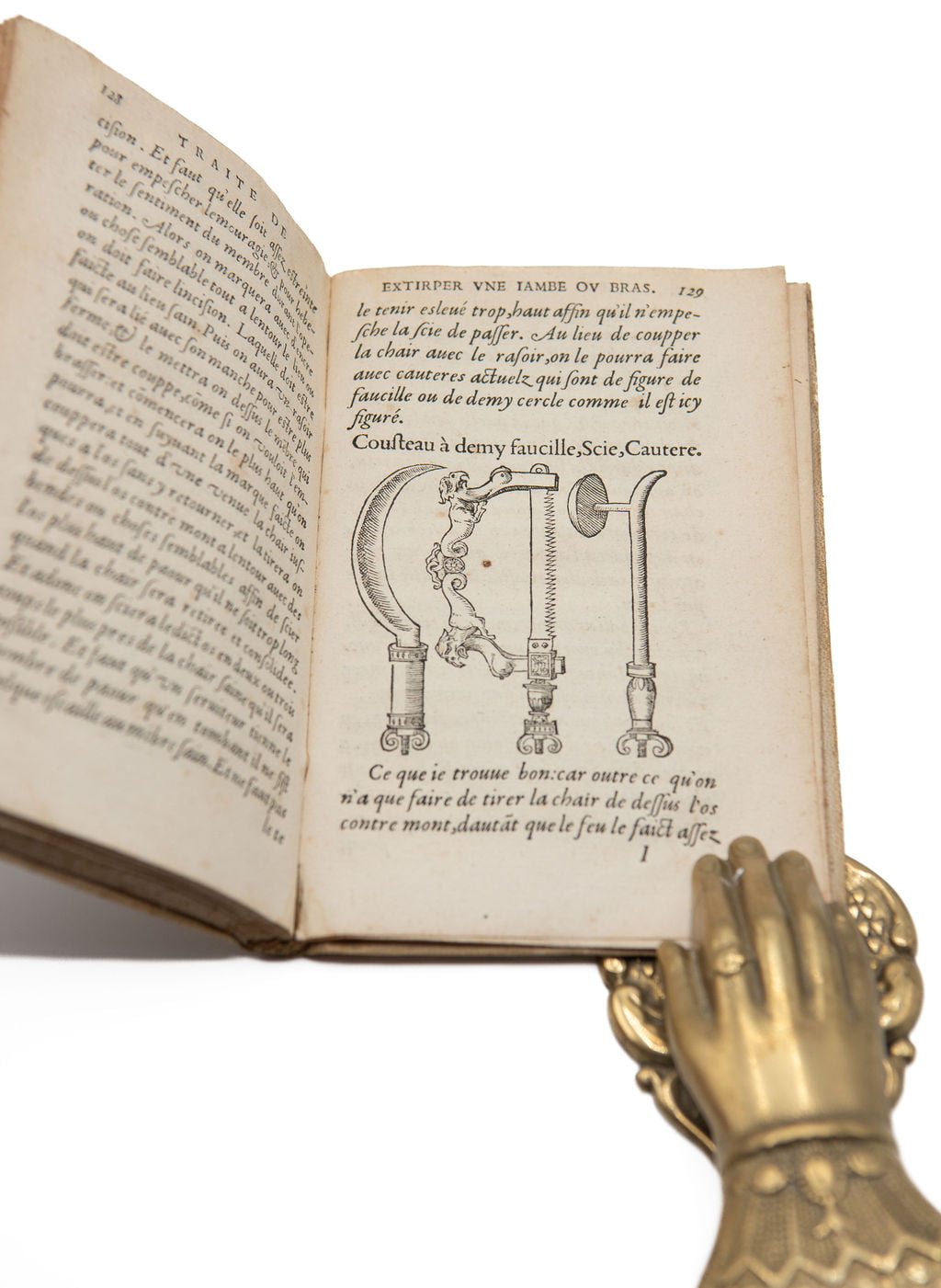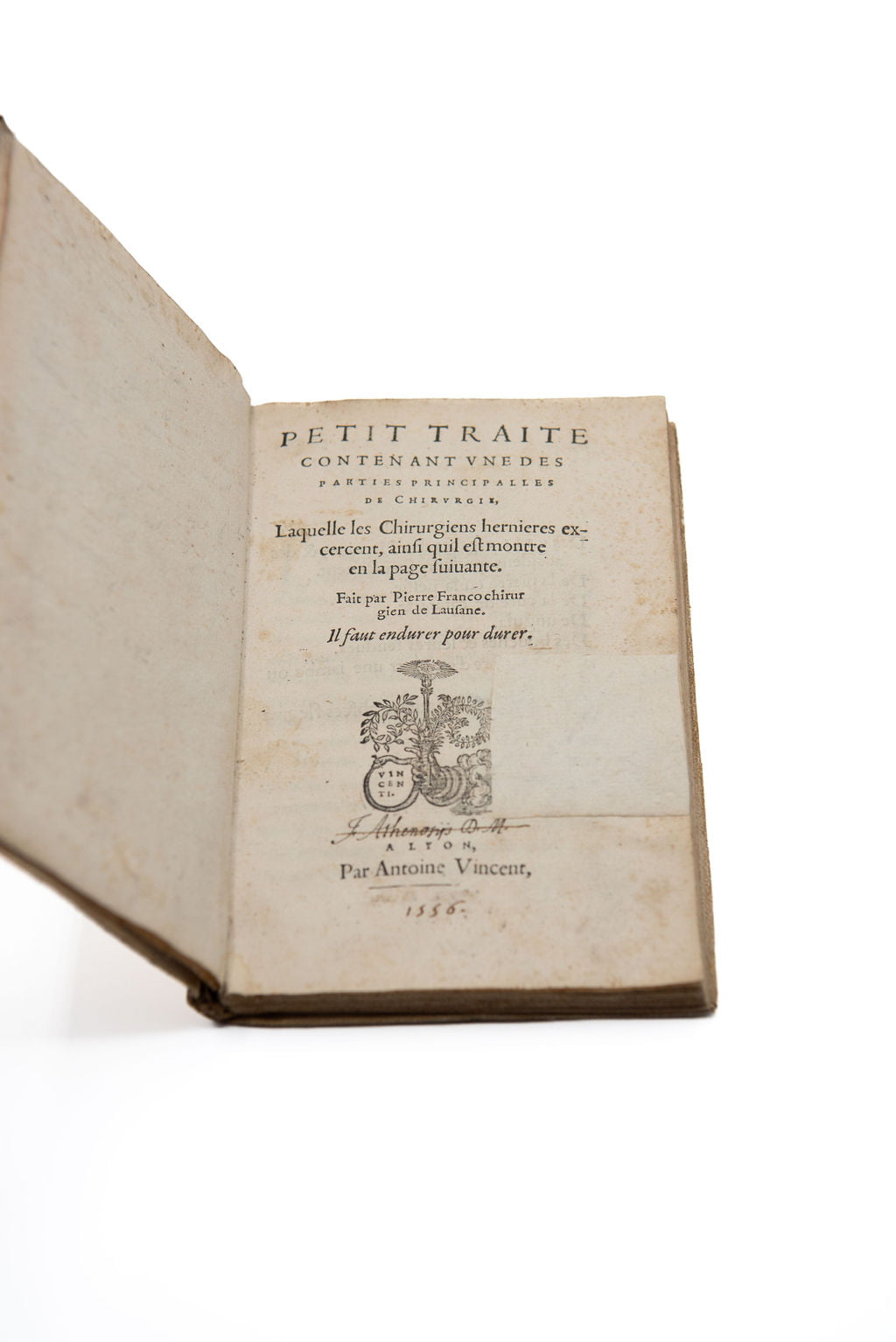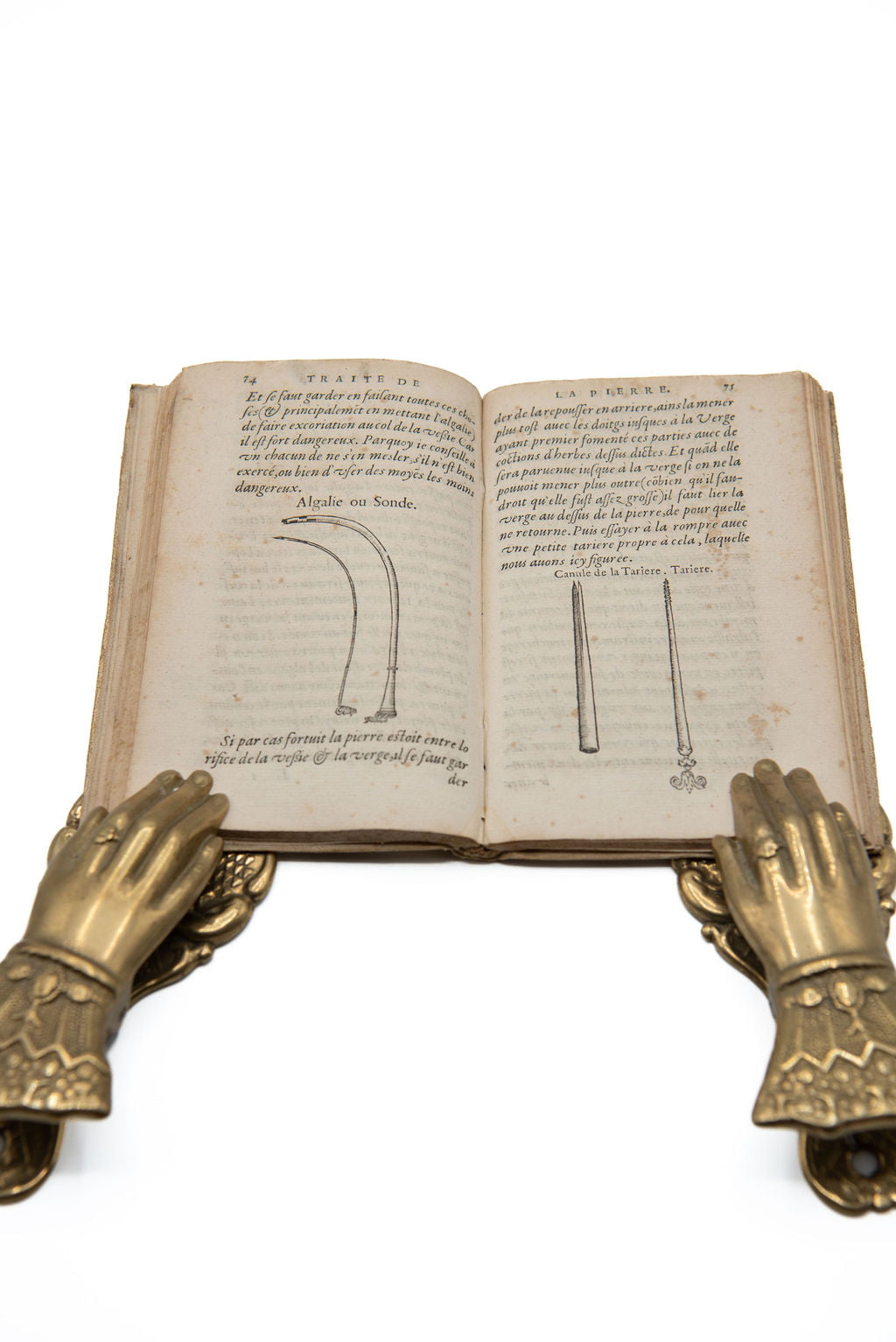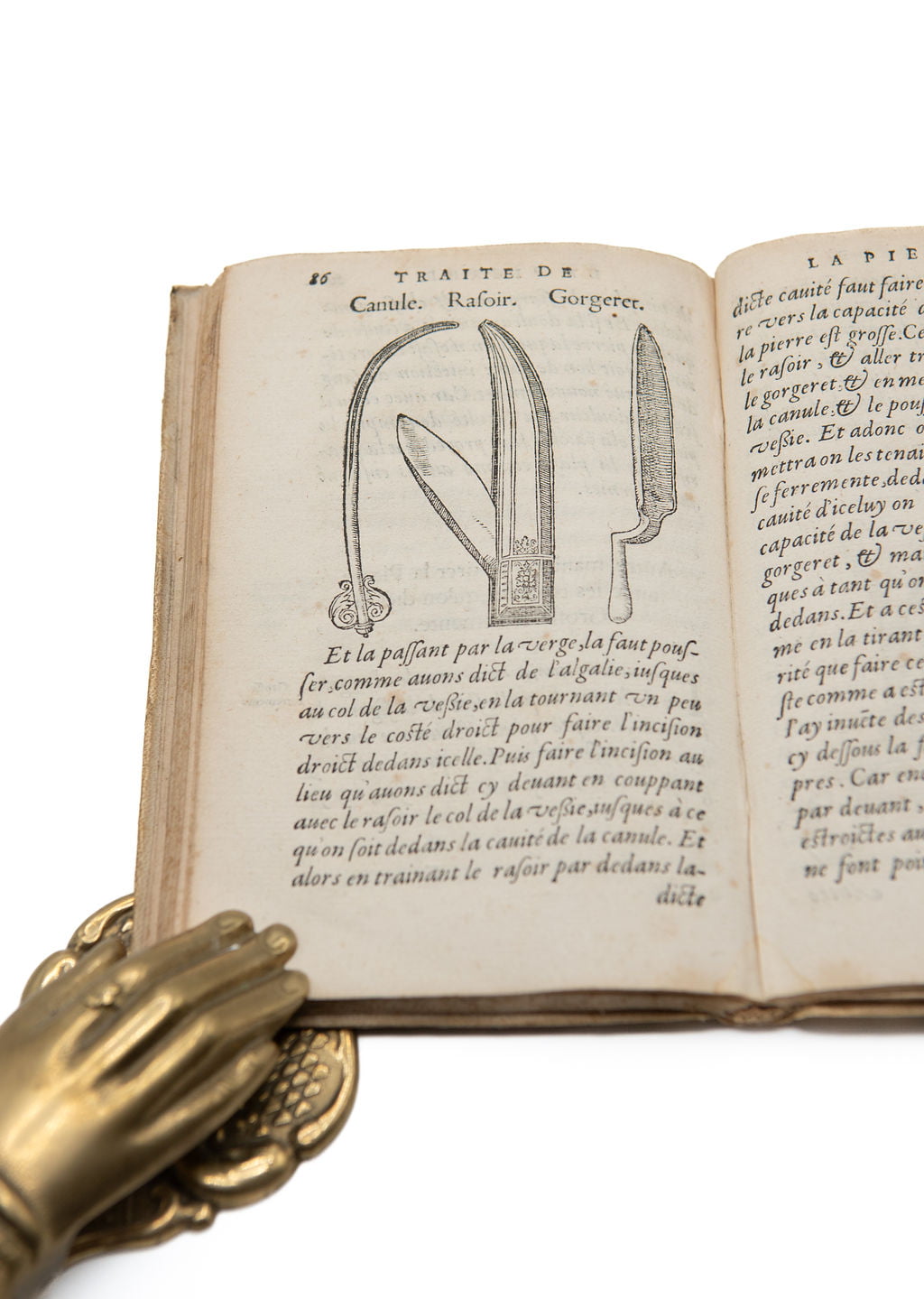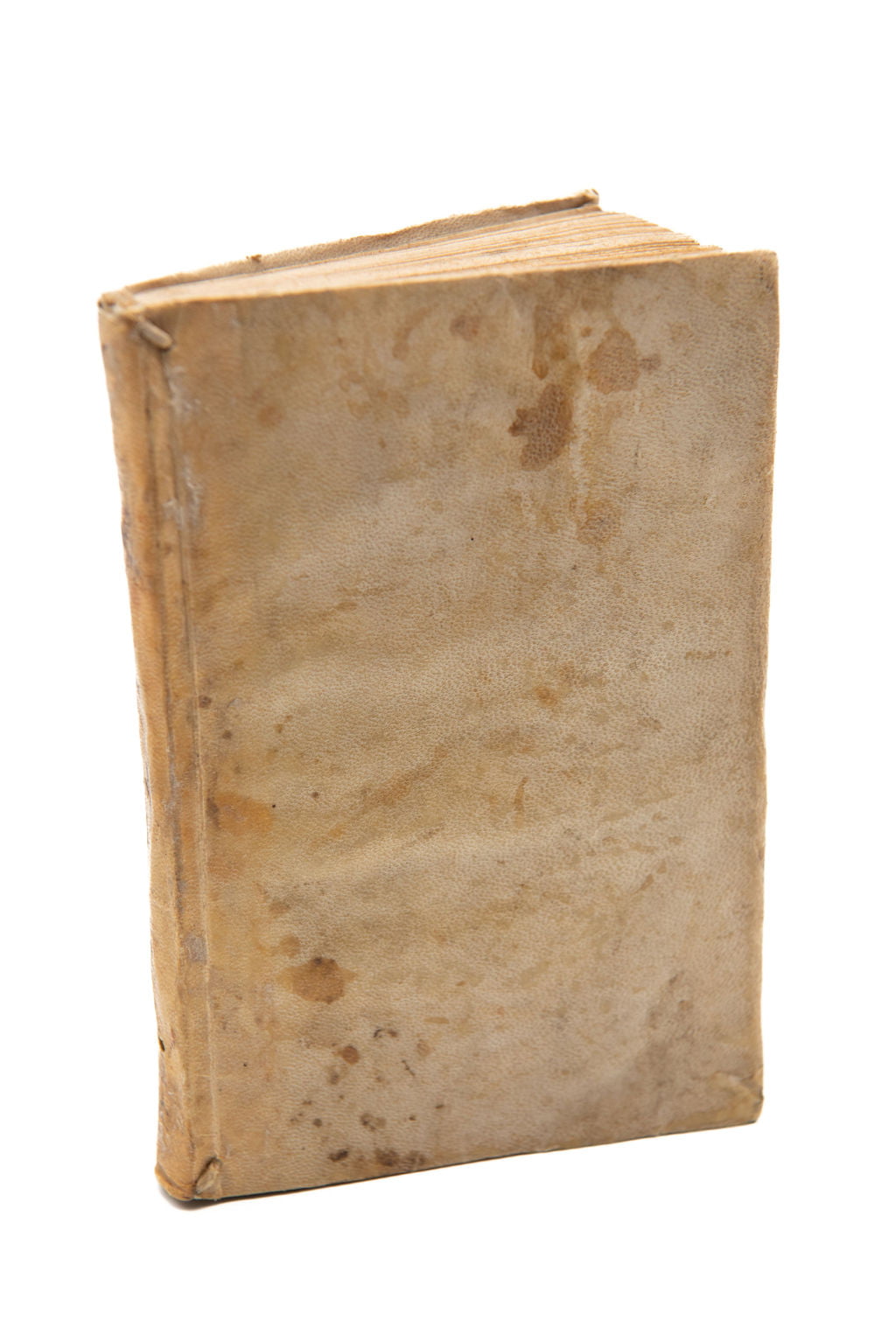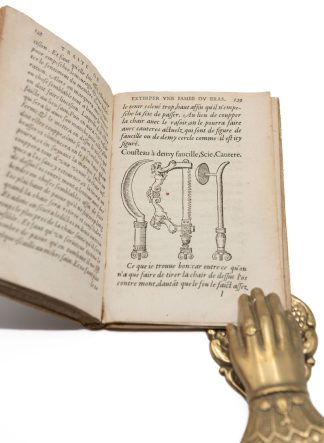FRANCO, Pierre.
Petit traite contenant une des parties principalles de chirurgie.
Lyon, Antoine Vincent, 1556£48,000.00
FIRST EDITION. 8vo, pp. (vi) 144. Italic and Roman letter, one woodcut historiated initials, typographical ornaments. Printer’s device to t-p, fourteen half-page woodcut illustrations of surgical instruments. Old repair to t-p and later to one blank corner, intermittent mainly marginal spotting, worm trail at gutter of first half. A very good copy in contemporary vellum, housed in modern morocco box. Slightly later ms. “ex libris P. Guisonii Doct. Med. 15 fl (?)” to fly, date of printing “1556”, and ms. signature “F. Athenosijs D.M.” to t-p.
A very good copy of the rare, attractively illustrated first edition of this remarkable treatise on surgery by the French Franco, a pioneer in the treatment of hernias and removal of calculi.
Born in Turriers of Haute-Provence to a modest family, Pierre Franco (or Francou, c. 1505-1578) was one of the greatest barber-surgeons of the XVI century. At the time, surgery was not a prerogative of physicians, but of a class of medical practitioners who – in many cases – would gain their experience and knowledge outside of universities. Franco did not receive any academic theoretical education: he became the apprentice of a hernia ‘operator’ and worked as an itinerant surgeon for all his life. A Calvinist, he fled to Switzerland due to religious persecutions in 1541 and practiced in Lausanne as “an operator of bladders, hernias and cataracts.” After a brief period in Lyon, Franco went back to Lausanne where he lived until his death.
‘Petit traité’ is Franco’s first work, a short textbook on “those branches of surgery commonly practised by hernia surgeons”, including the topics of hernia, stones, cataract, harelip, amputations, pterygium, and tumours. This work is entirely based on the author’s personal experience of thirty years: “(Franco) gave us what he himself conceived and executed, uninfluenced by authority, and every line bears the stamp of originality” (Pilcher). A great part of the volume is dedicated to the different types of hernias, and remarkably Franco here provides the first description of an operation for strangulated hernia. He is also famous for his innovative approaches to lithotomy, and particularly the removal of stones from the bladder in young children. In 1556, Franco performed the first extraction of a vesical calculus through the suprapubic abdominal wall in a 10-year old child. This procedure, which he invented, is also recorded here.
The volume is adorned by a series of woodcuts illustrating the surgical instruments employed by the author, some of which of his invention. These include, for example, a bladder catheter to be used as a guide to the proximal urethra, forceps to immobilize and pincers to grasp stones. Also depicted are slender cataract needles, a decorated ‘sickle’ and a ‘saw’ which were used to amputate arms and legs, and many others.
The manuscript ex libris on the fly possibly belongs to the French physician Pierre Guisson (c. half of the 17th century), of Avignon. He is the author of a few medical works published from 1665 onwards. The signature “F. Athenosijs” perhaps corresponds to Franciscus Athenosius, physician, who also signed a copy of the 1543 edition of Vesalius’ Fabrica: “Franciscus Athenosijs Doctor Medicus Agregatus” (see Margócsy et al., p. 474). His identity is unfortunately obscure.
From the library of the bibliophile Jean Blondelet, the greatest French collector of rare medical books of the 20th century.
USTC 34562; BM STC Fr. 16 century, p. 187; Durling 1651, Wellcome I 2408. Not in Adams or Heirs of Hippocrates. J.E. Pilcher, ‘Felix Würtz and Pierre Franco, A glimpse of sixteenth century surgery’, Ann Surg. 24/4 (1896). D. Margócsy, M. Somos and S.N. Joffe, The Fabrica of Andreas Vesalius: A Worldwide Descriptive Census, Ownership, and Annotations of the 1543 and 1555 Editions (2018).In stock


